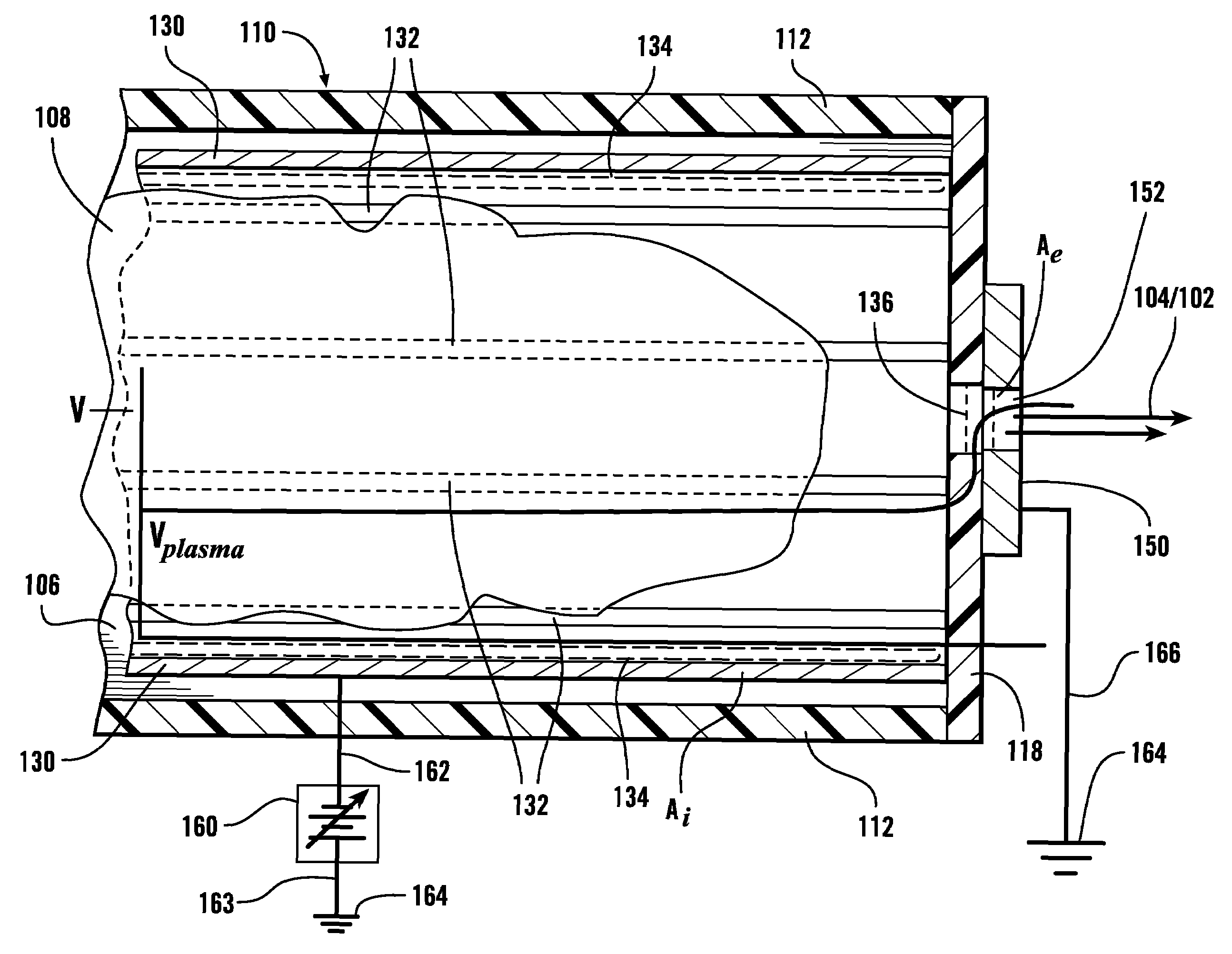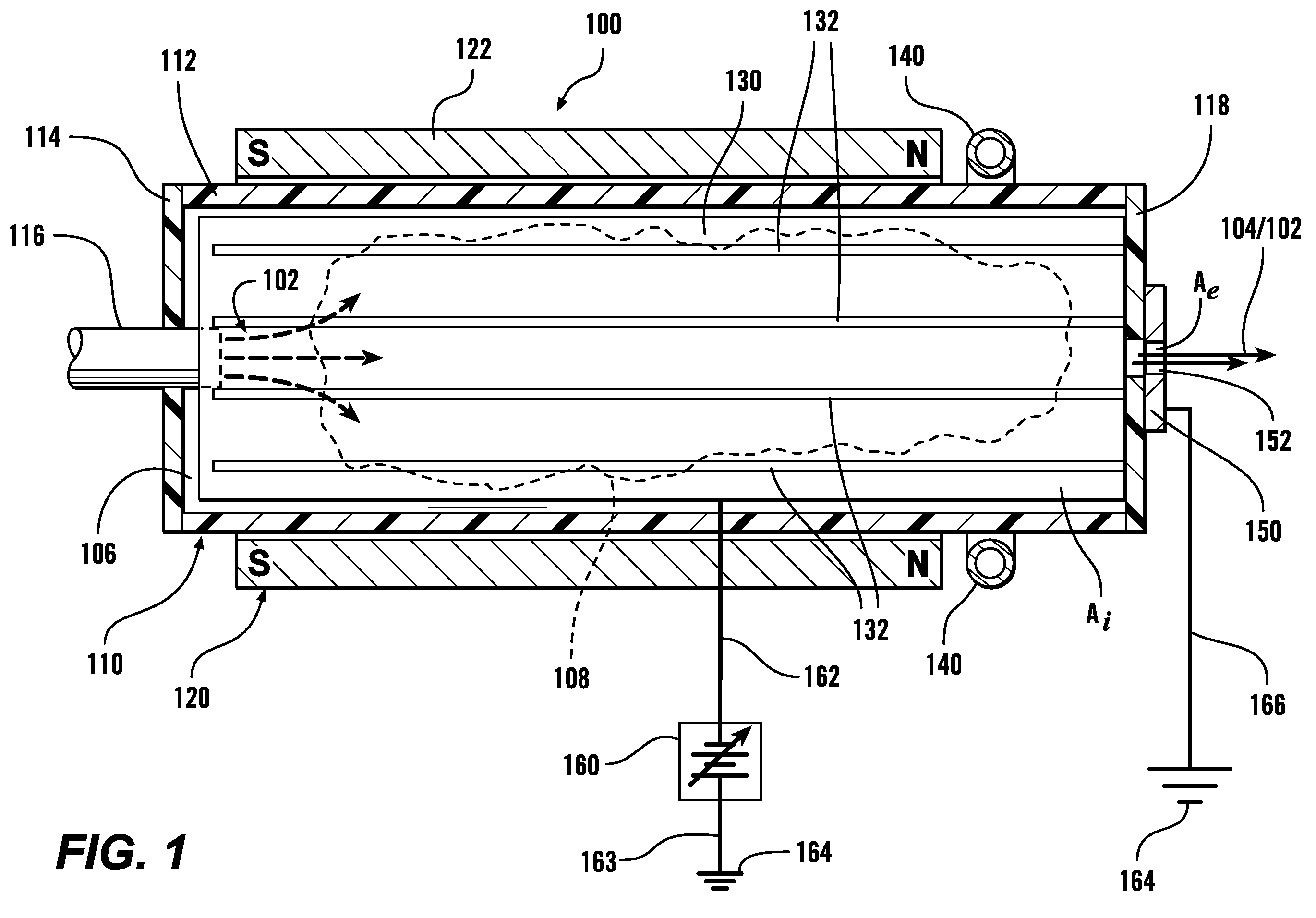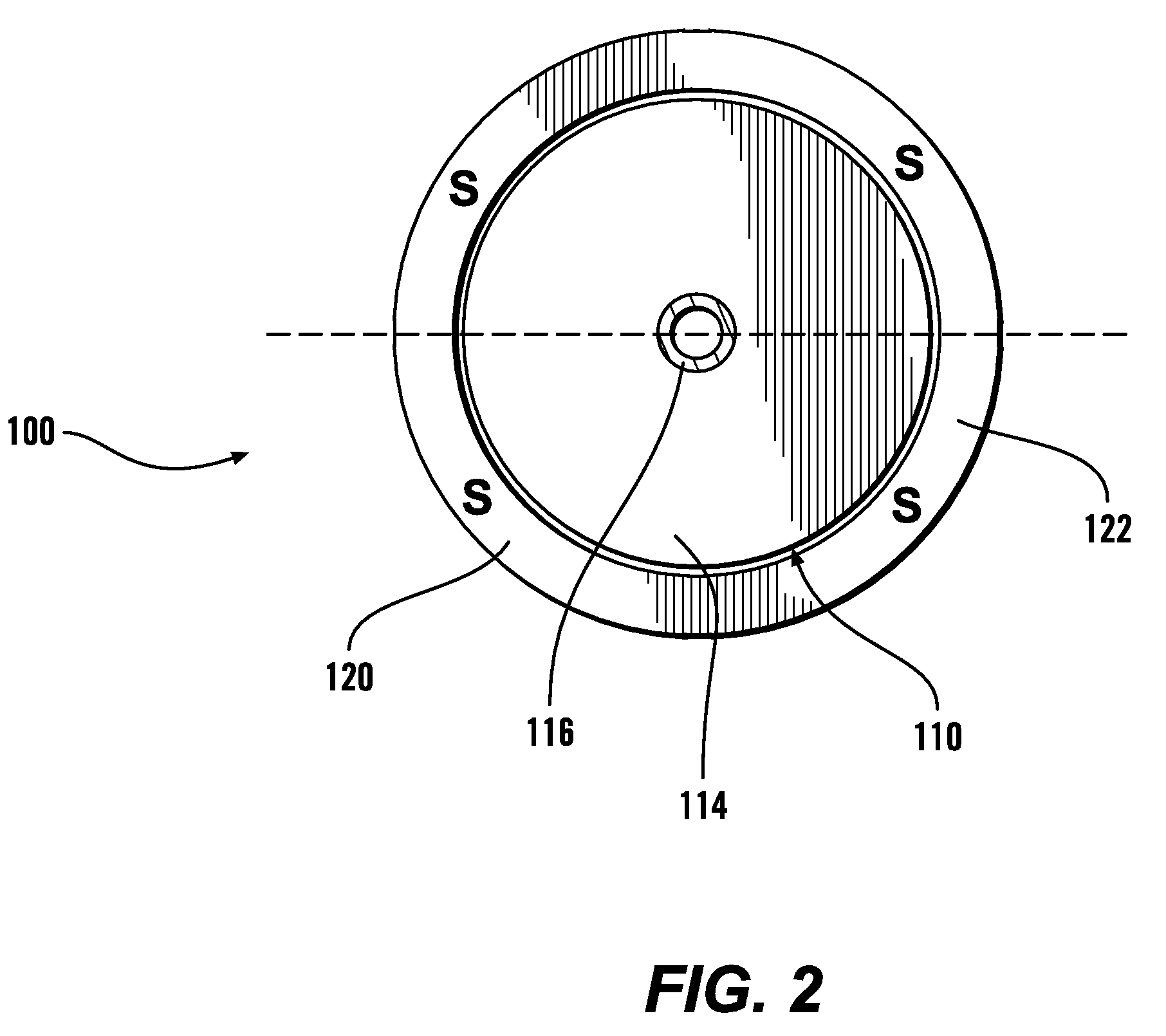Non-ambipolar radio-frequency plasma electron source and systems and methods for generating electron beams
a radio-frequency plasma and electron beam technology, applied in the field of systems, methods and devices for generating electron beams, can solve the problems of negatively charged spacecraft/satellite itself, negative charge of positively charged ion beams, and inability to provide the thrust to appropriately maneuver satellites or spacecrafts, etc., to eliminate the capacitance coupling effect of electric fields
- Summary
- Abstract
- Description
- Claims
- Application Information
AI Technical Summary
Benefits of technology
Problems solved by technology
Method used
Image
Examples
Embodiment Construction
[0010]Conventionally, electron beams associated with spacecraft are generated by hollow cathodes. However, hollow cathodes are problematic for a number of reasons. First, as the hollow cathodes are used to generate the desired electron beam, they are slowly consumed. Typical maximum lifetimes for commercial hollow electrodes are on the order of only three to four years. Additionally, the present generation of hollow cathodes employ barium oxide-tungsten (BaO—W) inserts as their emitting surface. However, this emitting surface deteriorates over time. Once the hollow cathode becomes inoperable, it is no longer possible to use the electron generating device. Additionally, hollow cathodes are difficult to ignite, either initially or if they should go out during use, and can become contaminated, thus reducing their efficiency.
[0011]One proposed solution for this limited lifetime is to provide multiple hollow-cathode electron generating devices and / or to provide multiple hollow cathodes w...
PUM
 Login to View More
Login to View More Abstract
Description
Claims
Application Information
 Login to View More
Login to View More - R&D
- Intellectual Property
- Life Sciences
- Materials
- Tech Scout
- Unparalleled Data Quality
- Higher Quality Content
- 60% Fewer Hallucinations
Browse by: Latest US Patents, China's latest patents, Technical Efficacy Thesaurus, Application Domain, Technology Topic, Popular Technical Reports.
© 2025 PatSnap. All rights reserved.Legal|Privacy policy|Modern Slavery Act Transparency Statement|Sitemap|About US| Contact US: help@patsnap.com



